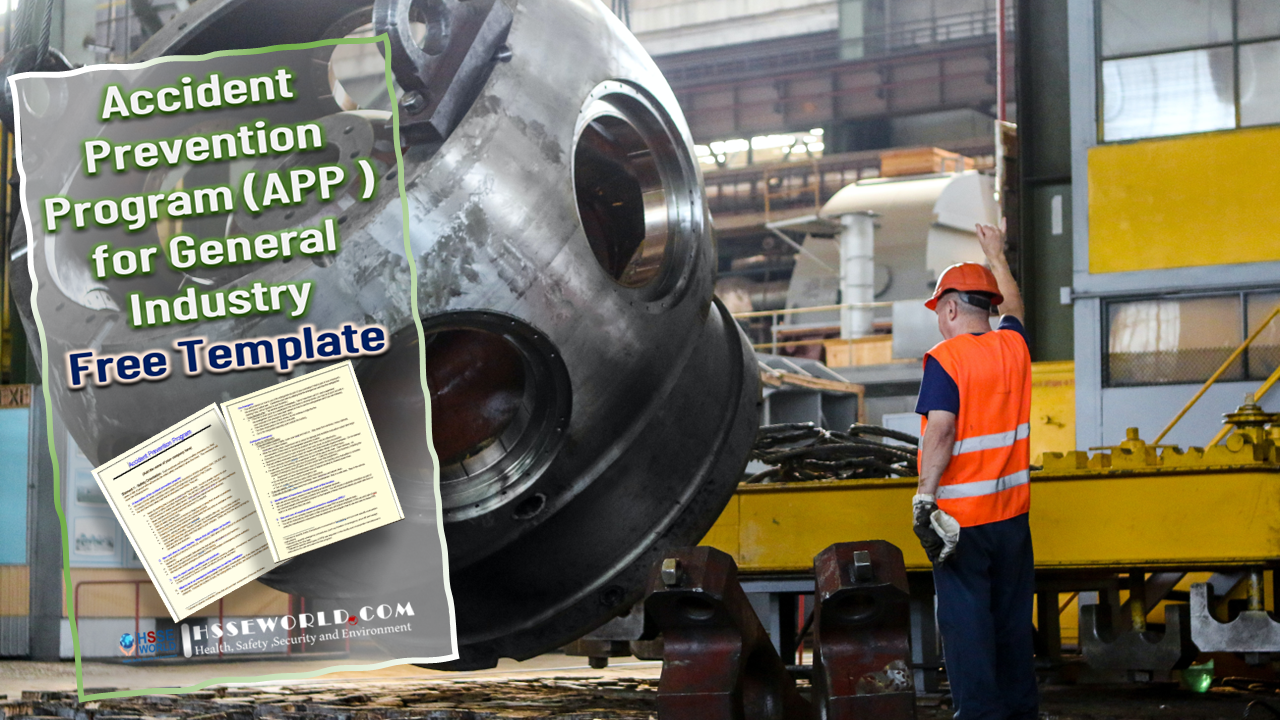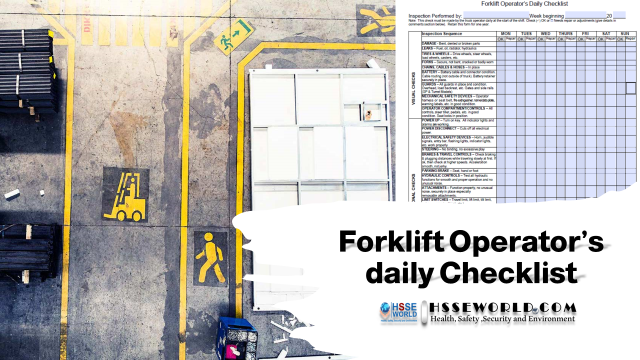Working at construction site is have a high potential of Hazards to occurs to workers and Equipment at working site so that Barricades is the one of control measures which used to alert personnel for existing Hazards. HSSE world propose at that post minimum standards regarding the type, use and maintenance of barricades used on the construction Projects In addition providing minimum requirements for barricades that restrict entry to and/or providing warning of areas that involves potentially hazardous activities, unsafe conditions, or unusual circumstances.

Protective Barricade
A “hard” physical barrier erected around a potential hazard to protect people and/or prevent entry into a specific area.
Warning Barricade
A barrier erected around a potential hazard to alert personnel that they may be nearing a hazard. A warning barricade provides no physical protection.
Barricades are required around excavations, openings in floors, walls, or roof areas, edges of platforms, around swing radius of rotating equipment housing such as, a crawler crane’s counterweight swing radius and aerial lift platform, certain types of overhead work and other potentially hazardous areas and tasks.
Barricades
All barricades will be erected and maintained in a neat and orderly manner and provided with gates for easy access/egress. Corners shall be squared. See Figure 1 for an example of a typical barricade set-up.

Warning “Soft” Barricades (barricade tape, etc.)
- These offer no physical protection but serve to alert personnel in the area that a potential hazard is present. Examples are below overhead work, near extreme temperature hazards, around a crawler crane’s counterweight swing radius, etc.
– Warning barricades must be placed a minimum of 1.5 meters (5 ft.) from the potential hazard and must be placed so that the hazard area is totally surrounded.
– Weather and wind conditions shall be considered when erecting temporary warning barricades and its supporting structure.
– If 5 feet (1.5 meters) is not available, a protective barrier must be used, but in no case shall it be closer than 1.5 meters (5 ft) from the hazard.
Protective “Hard” Barricades
- These not only warn of a potential hazard, but provide physical isolation or protection from the hazard. Examples include guardrails or cables set at the proper height around an excavation, floor/wall opening or anchored railroad ties to prevent driving into an excavation.
- protective barricades shall be designed to meet their intended purpose.
Example 1: If the barricade is to prevent personnel from walking into a floor hole, it must meet all requirements for a standard guardrail (top rail, mid rail and toe board designed to resist 91 kilogram (200 Lb.) deflection in any direction.
Example 2: If the barricade is to stop equipment from running into an excavation, it must be the equivalent of anchored 250 mm. X 250 mm. (10 in. X 10 in) timber, or 150 mm. (6 in.) I.D.concrete-filled pipe posts, set 1 meter (3 ft.) deep in concrete, spaced 1 meter (3 ft.) apart. - Barricades constructed of cable, rope or other hard to see material shall be flagged with ribbon or other highly visible material at intervals not to exceed 2 meter (6 ft.).
- Where space limitations (less than 1.5 meters/5 ft.) prevent the erection of a Warning Barricade a Protective Barricade shall be erected.
Barricade Tape
- Barricade tape, when used must have a minimum tensile strength of 91 kilogram (200 Lb.).
- Barricade tape shall be one of the following types that convey different levels of hazard warning.
- Red tape with black lettering “DANGER – DO NOT ENTER”. No one is to enter a “Red” barricaded area without the approval of the Supervisor responsible for the work and must wear all required personal protective equipment indicated for the hazard. Prior to entry, all personnel shall read and sign the “Safe Work Plan” verifying their understanding and agreement to follow all safe work practices. Examples include, but are not limited to: Overhead Work
Overhead Lifting
Welding/Burning at Elevation
Work Tasks designated as potentially highly hazardous.
- Yellow tape with black lettering “CAUTION”. Personnel are allowed to enter the barricade only after they have read the barricade tag and understand the purpose of the barricade, are alerted to the hazards within the area and have permission to enter from the supervisor responsible for the work. Prior to entry, all personnel shall read and sign the “Safe Work Plan” verifying their understanding and agreement to follow all safe work practices.
Examples include, but are not limited to:
• General Work Areas
• Chipping Concrete - Yellow and Magenta tape bearing signs having the international radiation symbol means that radioactive material is present. Only authorized persons (Radiographers) are allowed to enter.
- Barricade tape perimeters shall be considered equally enforceable as a protective barrier and shall not be crossed without permission.
- Warning barricade can include woven tape, plastic tape, plastic chain or any other materials that provide the correct color coding
and will withstand the environment in which it is placed. - Fabricated barricade stands shall be used to support barricades .Barricades will not be attached to valve handles, conduit,instruments, instrument tubing, or any other permanent plant equipment. Rebar or metal stakes driven into the ground are unacceptable because penetrations deeper than 7.62 centimeters (3 in) requires an excavation permit.
- Barricade tape must be erected and maintained in a neat and orderly manner at all times.
General
- Barricades shall be erected as directed by the Supervisor responsible for the work to be performed.
- Barricades shall be erected and tagged prior to starting work.
- Barricades shall be removed as soon as the work is complete.
- When working at elevated work areas where objects may fall, all lower levels shall be barricaded with “Red” (danger) barricade.“Red” barricades shall be provided for the work area and all levels below the work where no overhead protection is present.
- Barricade size should be large enough to provide protection to personnel from the potential hazardous task being performed, but should not occupy more area than is needed to accomplish the task. For overhead work, barricades should extend outward 0.3 meter (1 ft) for every 0.6 meter (2 ft) of height above the ground or floor surface.
- Where numerous small areas exist, one large barricade may be used to simplify the task of barricading.
- Barricades shall be inspected daily, before work begins to ensure that the barricade is maintained as a continuous perimeter around the hazard; and notifying work groups of any problems
- Barricades shall be erected approximately 1 meter (39/42 in.) above the floor/ground.
- Barricades shall have a controlled entry/exit gate. Open the gate only for the immediate purpose of moving Authorized Personnel or equipment in or out. A swinging entrance gate through the railing or an offset so personnel cannot walk directly into the opening must be provided.
- Barricades covering large areas can have more than one gate access.
- Barricades shall be maintained in a taut and level position.
- Do not tie barricade material to valve handles, conduit, instruments, instrument tubing, electrical gear or any fragile items.
- Flashing amber lights will be required on barricades during periods of low visibility, such as at night.
- Use standard traffic warning signs at congested areas or to temporarily detour traffic. The minimum size for signs is approximately 22.8cm x 30.5cm (9 in. by 12 in.)
- Personnel shall be prohibited from climbing over or ducking under any barricade. Gates shall be used.
- All personnel working inside the barricade are responsible to see that safe and orderly housekeeping is maintained at all times.
- All barricade stands on roofs and outside areas shall be secured or weighted down to prevent wind from blowing them over.
- A Road Closure Permit must be approved in advance before blocking any Site road.
- Barricades cannot block emergency access or egress routes (e.g., fire exits), unless break-away barricades are used or alternate routes are provided. Break-away barricades must be posted so personnel understand that the break-away barricade will not hinder access or egress through the normal emergency route. Alternate routes must be posted so personnel understand the path established by the alternate route, and that the normal route is not in service.
- Barricades cannot block access to installed emergency equipment. If possible, relocate portable emergency equipment (e.g., fire extinguishers) and associated signs to a location near, but outside the barricaded area.
- Care must be exercised with regard to over barricading for convenience.
Barricade Tags
- Barricade Tags (see Figure 2) shall be placed at each entrance gate and on all four sides of the barricade to indicate.
• Supervisor responsible for the work and who placed the barricade;
• Purpose or reason for the barricade (potential hazard);
• Personal Protective Equipment required to enter;
• Date barricade is erected; and
• Special conditions or restrictions regarding entry. - Information written on the barricade tag shall be clear and legible.





One thought on “Barricades”